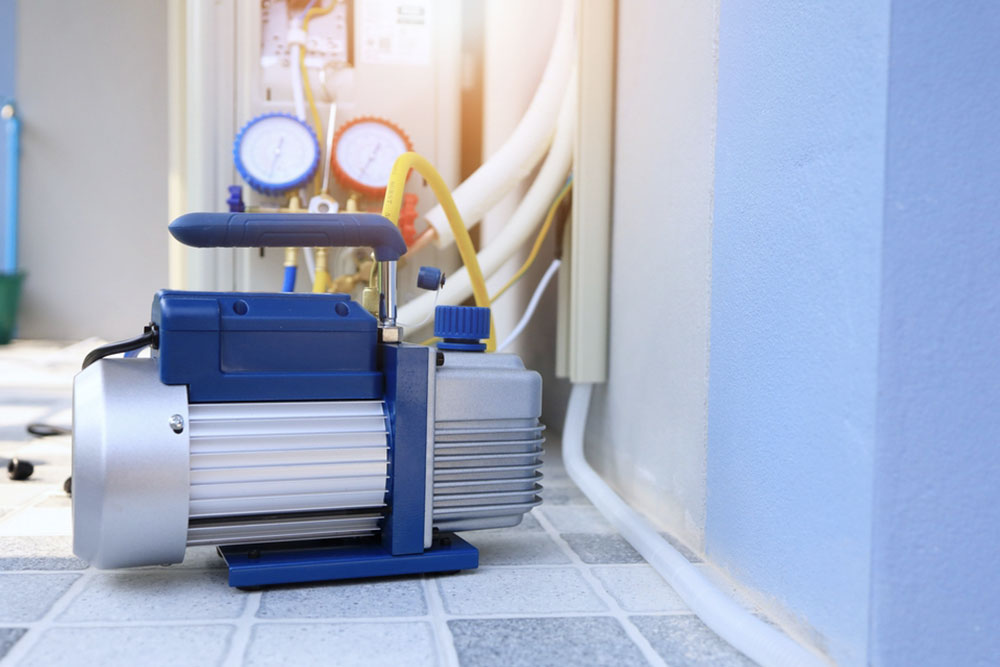
Vacuum pumps – Types, cost, and popular options
Vacuum pumps are mechanical devices that remove air and gas molecules from a sealed area. This helps create an area devoid of air, gas, or a “vacuum.” They can be wet or dry, depending on what is pumped through the device. Their general goal, however, is to clean and seal a certain area. They have several applications across industries like food and beverages, electronics, paper, plastic, healthcare, and woodworking, among others.
What are the various types of vacuum pumps?
Depending on their operating principles, there are several different types of vacuum pumps, such as:
Positive displacement vacuum pumps
These pumps operate by expanding and contracting a sealed chamber, where the fluid flow is controlled by one-way valves. These pumps make use of repetitive cycles or pulsations per second to create a vacuum.
Reciprocating vacuum pumps
These pumps expand and contract using a back-and-forth motion, also known as a stroke. They are further divided into the following types:
- Reciprocating Piston Vacuum Pump
- Plunger Vacuum Pump
- Diaphragm Vacuum Pump
Rotary vacuum pumps
Instead of using strokes, these pumps make use of rotating components to create low-pressure regions within the pump housing. To allow uninterrupted movement, these rotating bits are made of self-lubricating or low-friction materials such as graphite, polytetrafluoroethylene (PTFE), or polyether ether ketone (PEEK). Based on the design of the rotor, rotary vacuum pumps are further classified into:
- Rotary Vane Vacuum Pump
- Liquid Ring Vacuum Pump
- Rotary Piston Vacuum Pump
- Screw Vacuum Pump
- Gear Vacuum Pump
- Lobe Vacuum Pump
- Scroll Vacuum Pump
Momentum transfer pumps
These pumps operate using kinetic energy transfer. Instead of relying on the pulsating mechanism of positive displacement pumps, momentum transfer pumps use molecular flow. These are better suited for creating a high vacuum. Momentum transfer pumps are further divided into:
- Turbomolecular vacuum pump
These pumps are made with multiple stages of rotary and stationary turbine blades that move gas molecules toward the exhaust to create a vacuum. - Diffusion vacuum pump
Diffusion pumps make use of a motive fluid such as oil or steam to transfer movement to the gas molecules. The basic design of such pumps incorporates a heating chamber to make the fluids move at supersonic speeds to collect any flowing gasses in the chamber.
Entrapment vacuum pumps
These pumps make use of mechanical and chemical processes to create a vacuum. Some of the most common entrapment pumps include:
- Cryogenic vacuum pump
As its name suggests, this pump operates by cooling gasses down to their freezing point. The gasses are then captured by using adsorbents such as activated charcoal. - Sorption vacuum pump
This makes use of adsorbents like activated charcoal, zeolite, or other types of molecular sleeves to create a vacuum by capturing gas molecules. - Sputter ion vacuum pump
These pumps operate by ionizing the gasses using an anode. The gas then binds with a cathode or getter to create a vacuum. - Titanium sublimation vacuum pump
This pump makes use of a titanium filament that is repeatedly met with an electric current, thus vaporizing it. The gasses in the chamber are caught by titanium vapors through bonding. - Centrifugal pump
These pumps make use of velocity and momentum to move fluids. These are generally used when dealing with large volumes of liquids with high flow rates.
Based on their lubrication and sealing system, pumps may also be categorized as the following types:
- Wet vacuum pumps
Wet pumps are cheaper, and make use of lubricating fluids like oil. Depending on the application, different types of oils may be used. The only flipside to using these pumps is that there is a risk of contact between oil and fluid. - Dry vacuum pumps
Dry pumps do not utilize a lubrication system. Instead, they use solid lubricants like graphite, PTFE, and molybdenum disulfide. They allow for contaminant-free pumping and require less maintenance in comparison to wet vacuum pumps.
How much do vacuum pumps cost?
Depending on their features, build, and technology, vacuum pumps typically have an average basic investment cost of $786. However, this is only the initial purchase price, which generally makes up 10% of the product’s actual cost of operations. Other factors to consider include maintenance costs and energy consumption.
Some of the best deals on new and used vacuum pumps and parts can be found at top retailers across the country, such as USALab, US Vacuum Pumps, Machinery & Equipment Co., Clarkson Lab, BP Refcool, AVAC Industries, Federal Equipment Company, and others. These companies offer several of the best vacuum pump options to meet all your business needs.




